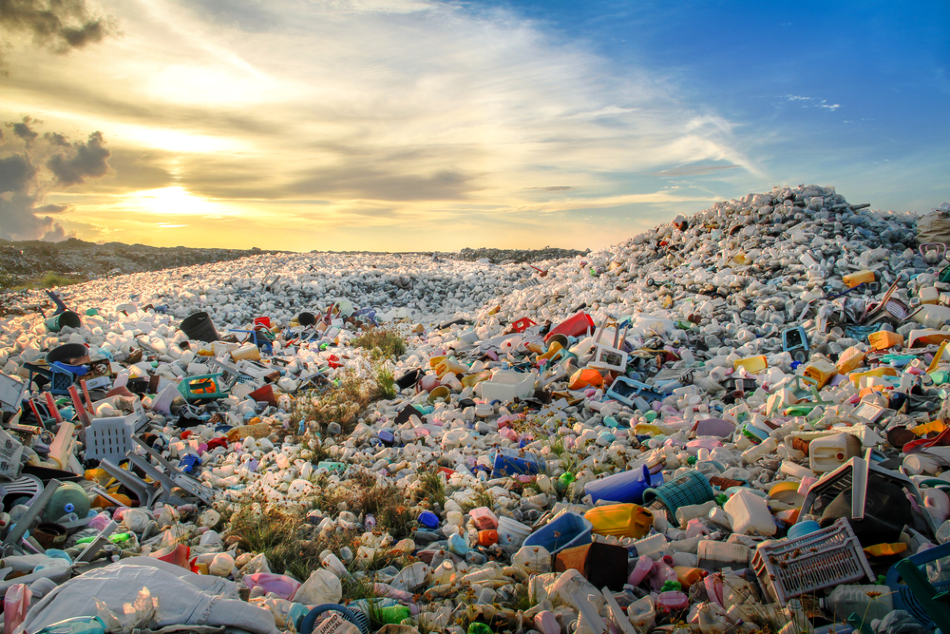
Image Credit: MOHAMED ABDULRAHEEM/Shutterstock.com
While plastics have altered modern society and allowed for significant developments in several industries, plastic pollution remains a major environmental concern. New technology promises to tackle this problem. A team at AIMPLAS, the Plastics Technology Centre in Spain, has demonstrated that selected enzymes and microorganisms can cause biodegradation and synthesis of plastics.
Exponential Growth of Plastic Use Threatens our Environment
Recent decades have seen the acceleration of plastic use, with convenience and throw-away culture as well as scientific innovation in the form of revolutionary medicines and devices, space travel, and even fuel-saving cars driving their demand. National Geographic estimates that 448 million tons of plastic were produced in 2015, a huge leap from the 2.3 million tons produced in 1950. By 2050, it is expected that this number will have doubled to close to one billion tons.
The exponential growth of plastic production brings with it a significant drawback. In 2015, it was estimated that 150 million metric tons of plastic contaminated the world’s oceans, and experts predict that this figure will increase fourfold to 600 million tons by 2040. In addition to contaminating our oceans, plastics are building up on land, particularly in landfills, where they can remain for decades given their low biodegradation rates and the poor availability of plastic recycling.
Using Enzymes to Break Down Plastics
A team at AIMPLAS, Spain, has been working on developing new plastic recycling technologies that can reduce the increasing volume of plastic pollution around the globe. The EU-funded ENZPLAST2 project has succeeded in establishing a new recycling technology that can break down the middle adhesive layers of plastic materials, allowing the layers to be classified and recycled.
The scientists developed a two-step process that first binds microorganisms to the surface of the polymer. The microorganisms then use the polymer as a source of carbon to boost their development. Next, under aerobic conditions, the polymer is degraded into carbon dioxide and water, and under anaerobic conditions, biogas and water are produced.
Microorganisms produce enzymes onto the surface of the polymer that degrades the polymer chain, breaking it into low-molecular-weight fragments. Via this process of degradation, the resultant monomers can be collected and recycled to create new products.
Under test conditions, the process has proven that it can be used successfully to degrade several polymers, such as hard-to-recycle polyurethane film by up to 70%. Researchers found that the enzymes work best within a temperature range of 25-95 ºC, which is significantly lower than conventional recycling techniques that need temperatures ranging from 180-230 ºC. This means that the new method requires less energy, making it a greener, more sustainable technique.
Read more: Chemical Analysis Equipment
Creating Bioplastics
One of the main aims of the project was to develop a method of degrading plastics to create bioplastics, including polybutylene succinate (PBS), polyethylene furanoate (PEF), polylactic acid (PLA), poly(butyl fumarate) (PBF) and poly(butylene adipate) (PBA). These materials are vital in the production of modern medicine and packaging, placing them in high demand.
Creating a sustainable method of producing these plastics would be incredibly valuable to reducing plastic waste as well as to the development of environmentally friendly plastic production methods.
The study’s results demonstrated that the lipase B (CalB) enzyme was useful in the degradation of plastics, enabling researchers to obtain the components of bioplastics.
Compostable Plastic Materials
Studies investigating the value of adding these enzymes to cast plastics for the improvement of these products’ compostability are also underway. Researchers are working on dispersing immobilized lipase B (CalB) enzymes through polylactic acid (PLA) and polyurethane (PU) under a variety of conditions.
Scientists will measure how long the plastics take to biodegrade and reduced timings will reflect improved compostability. If this is the case, the application of these enzymes could extend recycling methods, offering alternative plastic materials with increased compostability and further helping to reduce plastic pollution.
Packaging that Reduces Food Smell
The study also investigated how microorganisms can be used to effectively reduce smells emitted through dairy packaging. The use of microorganisms in plastic packaging significantly reduces odor intensity, offering another application for the team’s innovation within the food packaging sector.
A Future of Reduced Plastic Pollution?
What was achieved by the team at AIMPLAS represents a significant step toward evolving the field of plastic production and waste management. It enables it to be more sustainable by reducing waste and pollution, and allowing plastic to be more easily recycled and used to create in-demand bioplastics.
Hopefully, enzyme-based methods of plastic degradation will be adopted on a large scale to ensure that this innovative technology can have maximum impact on reducing plastic pollution.
References and Further Reading
Biodegradation and synthesis of plastics using selected enzymes and microorganisms. Laura Martí, Pablo Ferrero, Eva Verdejo. Resource Recycling. Available at: https://resource-recycling.com/plastics/wp-content/uploads/sites/4/2020/06/Resource-Recycling-ENZPLAST2-LMart%C3%AD.pdf
Plastic trash flowing into the seas will nearly triple by 2040 without drastic action. Laura Parker. National Geographic. Available at: https://www.nationalgeographic.com/science/2020/07/plastic-trash-in-seas-will-nearly-triple-by-2040-if-nothing-done/
Plastic Pollution. Greenpeace. Available at: https://www.greenpeace.org.uk/challenges/plastic-pollution/?source=GA&subsource=GOFRNAOAGA024K&gclid=CjwKCAjw1ej5BRBhEiwAfHyh1Dw5pR4cnz--9DtdyfITf6li-MJe8FGI5f3NZviY8a1leX86o1KbghoCzBwQAvD_BwE
R&D solution: new hope for multi-layer materials. Kristen Linnenkoper. Recycling International. Available at: https://recyclinginternational.com/plastics/rd-solution-new-hope-for-multi-layer-materials/31145/
The world's plastic pollution crisis explained. Laura Parker. National Geographic. Available at: https://www.nationalgeographic.com/environment/habitats/plastic-pollution/
Disclaimer: The views expressed here are those of the author expressed in their private capacity and do not necessarily represent the views of AZoM.com Limited T/A AZoNetwork the owner and operator of this website. This disclaimer forms part of the Terms and conditions of use of this website.